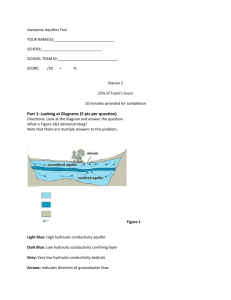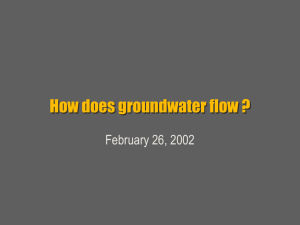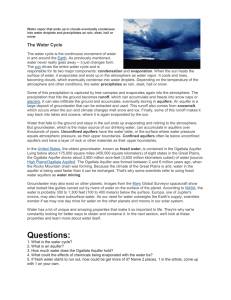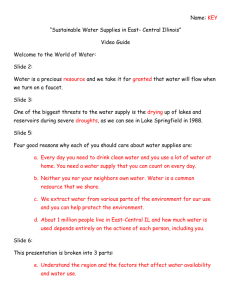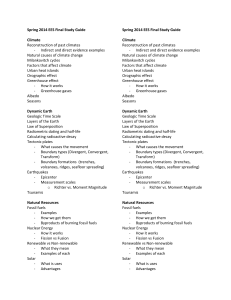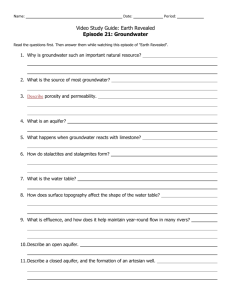References
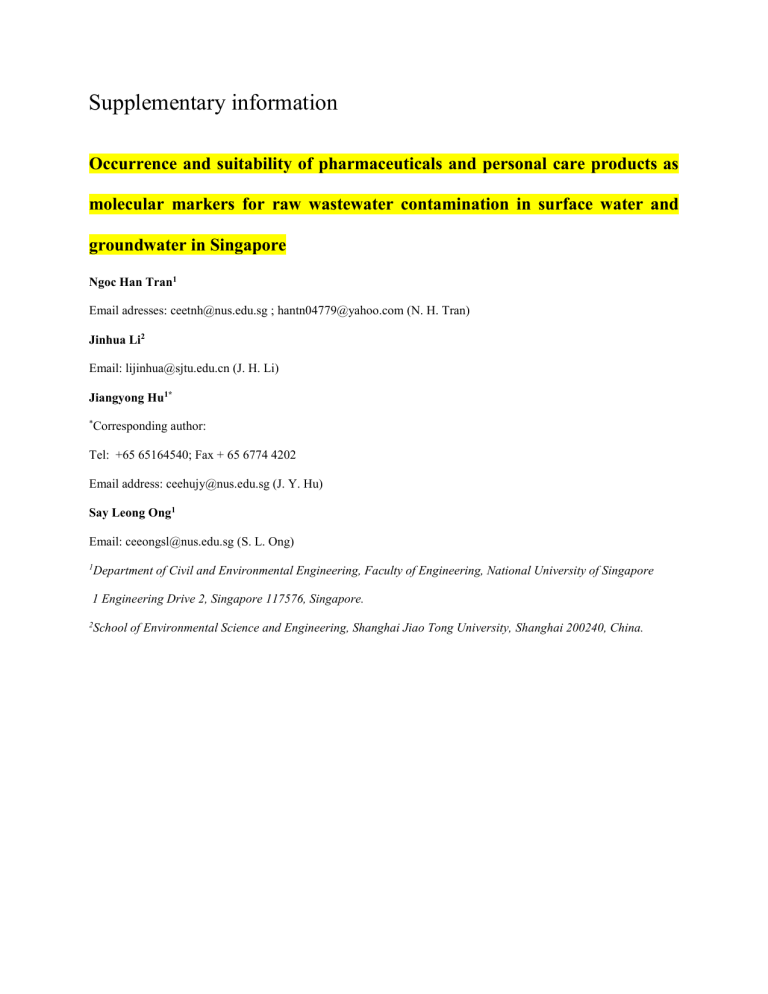
Supplementary information
Occurrence and suitability of pharmaceuticals and personal care products as molecular markers for raw wastewater contamination in surface water and groundwater in Singapore
Ngoc Han Tran 1
Email adresses: ceetnh@nus.edu.sg ; hantn04779@yahoo.com (N. H. Tran)
Jinhua Li 2
Email: lijinhua@sjtu.edu.cn (J. H. Li)
Jiangyong Hu 1*
* Corresponding author:
Tel: +65 65164540; Fax + 65 6774 4202
Email address: ceehujy@nus.edu.sg (J. Y. Hu)
Say Leong Ong 1
Email: ceeongsl@nus.edu.sg (S. L. Ong)
1 Department of Civil and Environmental Engineering, Faculty of Engineering, National University of Singapore
1 Engineering Drive 2, Singapore 117576, Singapore.
2 School of Environmental Science and Engineering, Shanghai Jiao Tong University, Shanghai 200240, China.
1.
Selection of target PPCPs
Prior to implementing this study, a careful literature review on the occurrence and fate of organic tracers in the aquatic environment (i.e. wastewater, surface water and groundwater) has been done in order to select target PPCPs, which can potentially serve as sewage indicators for this study. The selection of potential indicator compounds to evaluate the impact of wastewater contamination in surface water and
groundwater for this study is based on the following criteria as suggested by (Nakada et al., 2008;
from sewage, (ii) the indicator compounds should be persistent and present at concentrations significantly above their detection limits, (iv) the indicator compounds should be present in contaminated waters at high detection frequency, but not present in clean water sources, and (v) the potential indicator compounds should not undergo attenuation processes, such as biodegradation, photo-degradation and/or sorption.
However, it should be emphasized that level of biodegradability of different indicator compounds might be used as a helpful tool to differentiate the sources of pollution, such as contaminated waters by raw wastewater or by treated wastewater effluents. In addition, the potential indicator compounds should preferably have high water solubility, low octanol-water partition coefficient (log K ow
< 4.0) and low volatility.
In particular, when a potential indicator compounds are used to verify water contamination with human wastewater, which should be related to human activities. This means that these indicator compounds are produced, consumed and/or excreted by human or be used in household products to discriminate against human and animal waste sources.
In the light of the above criteria for indicators, 17 PPCPs were selected as potential tracers to detect sewage contamination in surface water and groundwater in this study, including: acetaminophen (ACT), carbamazepine (CBZ), caffeine (CF), clofibric acid (CA), crotamiton (CTMT), diclofenac (DCF), d iethyltoluamide (DEET), diatrizoic acid (DTZ), fenoprofen (FEP), gemfibrozil (GFZ), ibuprofen (IBP), indomethacin (IDM), ketoprofen (KEP), naproxen (NPX), propyphenazone (PPZ), trimethoprim (TMP), and salicylic acid (SA).
ACT
CA
CBZ
CF
CTMT
DCF
DEET
DTZ
FEP
GFZ
IBP
IDM
KEP
NPX
PPZ
SA
TMP
Acetaminophen
Clofibric acid
Carbamazepine
Caffeine
Crotamiton
Diclofenac
Diethyltoluamide
Diatrizoic acid
Fenoprofen
Gemfibrozil
Ibuprofen
Indomethacin
Ketoprofen
Naproxen
Propyphenazone
Salicyclic acid
Trimethroprim n.a: not applicable
Table A1 . The physicochemical properties of target PPCPs in this study.
Compound Abbreviation Molecular weight Log K ow pK a
Reference
151.16
241.65
236.28
194.19
203.28
296.16
191.27
613.91
242.28
250.34
206.29
357.80
254.29
230.27
230.31
138.12
290.32
2.46
3.91
2.18
0.49
3.9
3.65
0.46
2.58
2.45
-0.07
3.18
1.94
2.26
0.91
3.97
4.27
3.12
9.5
3.2
13.9
14.0
n.a
4.2
n.a
3.4
4.5
4.8
4.51
4.5
4.45
4.2
n.a
2.36
3.2
Table A.2. Typical characteristics of groundwater.
Monitoring well Type of aquifer Depth Water table * Temperature pH TDS
(m) (m) ( o C) (mg/L)
EC
(mS/m)
GW1
GW2
GW3
GW4
GW5
GW6
GW7
GW8
GW9
Unconfined aquifer
Unconfined aquifer
Unconfined aquifer
Unconfined aquifer
Unconfined aquifer
Unconfined aquifer
Unconfined aquifer
10
10
10
10
11
10
10
111.9
106.7
101.6
106.9
101.5
101
100
Unconfined aquifer 10 101.2
Unconfined aquifer 4.7 111.3
GW10 Unconfined aquifer 10 101.5
GW11 Unconfined aquifer 5.9 109.7
* Water table elevations are meters above mean sea level.
27.2
27.6
27.2
27.2
27.9
27.6
27.6
27.5
27.3
27.2
27.3
7.2 89 134
7.3 197 256
7.1 1242 297
6.6 1334 336
6.8 1372 4.2
6.5 1783 528
7.2 1419 430
8.1 1487 474
6.8 135 418
7.1 105
7.2 191
156
418
Kilometers
0 0.5 1.0 1.5
+111.7
GW1
+110.3
+107.7
+109.7
GW4
Groundwa ter flow directions
Groundwa ter ta ble eleva tions (m)
Groundwa ter monitoring wells
Loca l ca tchment boundaries
GW2
+105.7
GW3
GW5
GW7
+104
+100
GW8
+101.5
+101.5
GW6
GW10
+104
+ 105.3
+107.9
+110.7
GW9
GW11
+109.7
Fig. A.1. Map showing the groundwater monitoring wells and the water table elevation (2012) in the unconfined aquifer in the investigated area. Water table elevations are meters above mean sea level. Arrows depict the groundwater flow directions .
14
15
16
17
18
19
20
10
11
12
13
8
9
6
7
4
5
1
2
3
21
References
Bones, J., Thomas, K., Nesterenko, P.N., Paull, B. 2006. On-line preconcentration of pharmaceutical residues from large volume water samples using short reversed-phase monolithic cartridges coupled to LC-UV-ESI-MS. Talanta, 70, 1117-1128.
Busetti, F., Linge, K.L., Blythe, J.W., Heitz, A. 2008. Rapid analysis of iodinated X-ray contrast media in secondary and tertiary treated wastewater by direct injection liquid chromatography-tandem mass spectrometry. J. Chromatogr. A, 1213, 200-208.
Hawker, D.W., Cumming, J.L., Neale, P.A., Bartkow, M.E., Escher, B.I. 2011. A screening level fate model of organic contaminants from advanced water treatment in a potable water supply reservoir. Water Res., 45, 768-780.
Kasprzyk-Hordern, B., Dinsdale, R.M., Guwy, A.J. 2009. Illicit drugs and pharmaceuticals in the environment - forensic applications of environmental data, part 2: Pharmaceuticals as chemical markers of faecal water contamination. Environ. Pollut., 157, 1778-1786.
Nakada, N., Kiri, K., Shinohara, H., Harada, A., Kuroda, K., Takizawa, S., Takada, H. 2008. Evaluation of pharmaceuticals and personal care products as water-soluble molecular markers of sewage.
Environ. Sci. Technol., 42, 6347-6353.
Ternes, T.A., Joss, A. 2006. Human Pharmaceuticals, Hormones and Fragrances: The Challenge of
Micropollutants in Urban Water Management. IWA Publishing, London, UK.
Tran, N.H., Urase, T., Kusakabe, O. 2009. The characteristics of enriched nitrifier culture in the degradation of selected pharmaceutically active compounds. J. Hazard. Mater., 171, 1051-1057.
22
23
6


